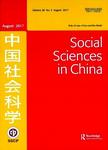Make Efforts to Develop an Olive-shaped Distribution Pattern: An Analysis Based on Data from the Chinese Social Survey for 2006-2013
努力形成橄榄型分配格局——基于2006—2013年中国社会状况调查数据的分析(英文)作者机构:Chinese Academy of Social Sciences (CASS) Institute of Sociology CASS
出 版 物:《Social Sciences in China》 (中国社会科学(英文版))
年 卷 期:2016年第37卷第1期
页 面:5-24页
学科分类:0303[法学-社会学] 02[经济学] 0201[经济学-理论经济学] 020105[经济学-世界经济]
基 金:Our thanks should go to Li Wei Zhang Liping and Cui Yan from the Chinese Social Survey research group (CSS) for their technical support and advice on data use and also to the anonymous reviewers from Zhongguo Shehui Kexue for their valuable comments on the paper's writing and revision
主 题:income distribution middle income group olive-shaped distribution structure
摘 要:Increasing the proportion of the middle income group is key to shrinking the income gap and developing an olive-shaped distribution structure in China. Data from the Chinese Social Survey for 2006 to 2013 show that the proportion of the middle income group oscillates between 27 percent and 28 percent. It is estimated that by 2020, we will have achieved an initial olive-shaped distribution structure (larger in the middle and smaller at each end) if the average income of the lower and lower middle income groups can be quadrupled and that of the middle and high income groups can be doubled. To achieve this aim, we need to ensure that residents' incomes rise faster than GDP, continue large-scale poverty reduction, endeavor to improve the employment situation for college graduates and the new generation of migrant workers, improve the social security system, stabilize the price of goods and housing, and alleviate the pressure on the lower middle income group.



